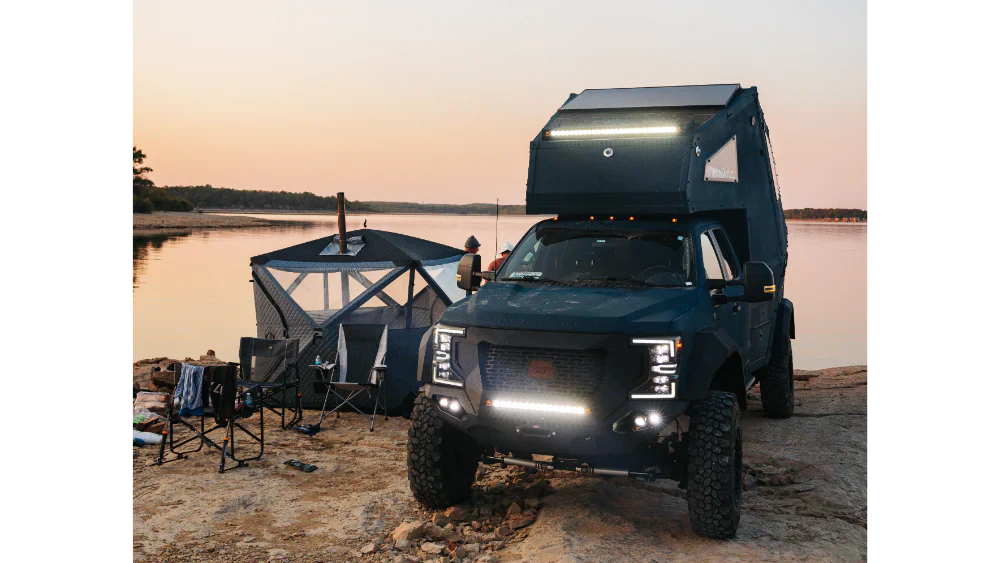The DIY Sauna Trend Is Heating Up
Building a DIY sauna has become a rewarding project for wellness enthusiasts, outdoor lovers, and ambitious homeowners alike. Whether you're dreaming of a cozy indoor sauna tucked into your basement or an outdoor sauna overlooking your garden, the idea of having your own sauna space has never been more desirable.
Driven by the desire to unplug, sweat with intention, and bring authentic traditions home, more people are choosing to build a sauna themselves. But while the thought of handcrafting a personal steam retreat sounds romantic, the reality involves far more than just some wood, a heater, and a bench.
In this comprehensive guide, we’ll walk you through everything you need to know about DIY sauna construction, sauna design principles, and whether a portable wood-burning sauna like Kyfe might offer a smarter, safer, and more luxurious solution.
Why Build a Sauna at Home?

A home sauna offers both health benefits and emotional rewards. You control the layout, the atmosphere, the temperature, and most importantly, the ritual. A properly built dry sauna or steam sauna can enhance cardiovascular health, support detoxification, improve sleep, and create space for reflection.
Wellness at Your Doorstep
A regular sauna session reduces stress, boosts circulation, and helps your body recover from workouts or long workdays. Whether you’re using a traditional sauna or a more energy efficient electric heater setup, the experience centers around heat, hydration, and rest. Creating a healthy sauna environment with proper ventilation and the option for higher humidity can further amplify these benefits.
Customization Meets Ritual
DIY sauna builds allow for complete personalization. From western red cedar interiors to corner mouldings and custom lighting, the ability to shape your own space brings a sense of creative freedom. You can choose between indoor sauna or outdoor sauna layouts, and include additional features like a control panel, glass walls, or tiered benches depending on available space and personal preferences.
What to Consider Before You Build a Sauna
While it may seem straightforward, sauna construction involves careful planning. Without the right materials, layout, and safety measures, your dream sauna could become a costly mistake.
Location: Indoor Sauna vs Outdoor Sauna
An indoor sauna works well for basements, spa bathrooms, or home gyms, especially if you prefer easy access and year-round use. You’ll need enough space, good ventilation, and moisture-resistant materials. An outdoor sauna, on the other hand, provides a more immersive experience. Positioned in the garden or near a lake, it connects you with nature and allows for larger saunas, but it must be built on flat, heat safe ground.
Materials and Structure
Choosing the right wood is essential. Western red cedar is a favorite for its pleasant aroma, resistance to decay, and thermal stability. Other options like thermo spruce also offer strong heat retention and visual appeal. For insulation, mineral wool paired with a vapor barrier or moisture barrier ensures efficient heat containment.
Your sauna room should include insulated walls, a sturdy ceiling, non-metal benches, and a floor that can handle high temperatures and humidity. Be sure to follow local regulations or building regulations, especially for electrical installations or wood burning heater setups.
Sauna Heaters: Choosing the Right Source of Heat
The heart of any sauna is the heater. You have several options, each with pros and cons.
Wood Burning Heaters
A wood burning heater is the most traditional choice. It offers high heat, the ability to pour water over sauna stones for steam, and creates a deeper sensory experience. However, it requires fire safety knowledge, chimney ventilation, and dry wood storage. This setup is better suited for outdoor saunas with proper clearance.
Electric Heaters
An electric heater is more common for indoor sauna setups or compact sauna kits. It is energy efficient, easy to control with a built-in control panel, and does not require chimney venting. Many electric sauna heaters also include timers, temperature sensors, and are safer in homes with children or pets. However, they usually max out at lower humidity levels compared to a wood-fired sauna, so achieving higher humidity may require specific models or additional features.
Infrared Heaters
Infrared systems are technically not saunas in the traditional sense, as they heat the body directly rather than the air or sauna room. While they are compact and cost effective, they do not produce steam, making them a different category entirely.
How to Build a DIY Sauna: Step by Step Guide

Step 1: Choose a Location
Determine whether you’ll create an indoor sauna or outdoor sauna. Check local regulations, available space, and whether you'll need a licensed electrician or plumbing support.
Step 2: Frame the Structure
Use treated lumber and ensure there is enough room for insulation, lighting, and ventilation. Larger saunas should have higher ceilings and double-tier benches, including a lower bench for cooler seating options.
Step 3: Add Insulation and Vapor Barrier
Install high-quality insulation such as mineral wool between the studs, followed by a vapor barrier to protect against moisture buildup. This step is critical for heat retention and long-term durability.
Step 4: Install Sauna Walls and Ceiling
Western red cedar or thermo spruce panels work best. Secure corner mouldings and use heat safe sealants to finish seams. Make sure the ceiling height allows hot air to circulate properly.
Step 5: Build the Floor and Benches
A non-slip, water-resistant floor is essential. Use wooden slats or elevated platforms to prevent burns. Benches should be wide enough for lying down, with a lower bench option for those who prefer less intense heat.
Step 6: Set Up the Heater
Whether you’re using a wood burning heater or electric heater, follow the manufacturer’s guidelines carefully. For electric setups, a licensed electrician should handle wiring. For wood stoves, chimney installation and fresh air flow are non-negotiable for safety.
Step 7: Add Lighting and Finishing Touches
Use sauna-specific lighting fixtures that withstand humidity and temperature swings. Consider ambient lighting under benches or behind walls to elevate the sauna design and overall atmosphere.
Safety Essentials for Every Sauna
No matter how beautiful or cost effective your setup is, safety comes first.
-
Always ensure proper ventilation for fresh air intake
-
Never leave a heater unattended during a sauna session
-
Keep water away from electrical installations
-
Use only sauna-approved materials to prevent toxic fumes or fire hazards
-
Install a thermometer and monitor your sauna room temperature
-
Allow sauna stones to fully preheat before applying water
-
Limit sauna sessions to 15–20 minutes at a time with breaks in between
Hidden Costs and Time Commitments of DIY Builds

Many people underestimate the true cost and time required to build a sauna. Beyond the price of materials like western red cedar, sauna heaters, and insulation, you’ll need tools, labor hours, and possibly permits. DIY sauna builds can cost anywhere from $5,000 to $10,000 depending on your choices and whether you’re hiring out electrical work or chimney installation.
There’s also ongoing maintenance. Outdoor sauna units will need weatherproofing, regular checks on your heater and chimney, and replacements for sauna stones or lighting components. It’s a rewarding project, but not a simple one.
Sauna Kits: A Middle-Ground Option
For those who want a semi-custom solution without full DIY complexity, sauna kits offer a streamlined path. These kits come pre-cut with walls, benches, lighting, a heater, and often a vapor barrier and insulation. Most sauna kits require some assembly, but they reduce the guesswork and are ideal for both indoor sauna and outdoor sauna applications.
However, you’ll still need a licensed electrician for electric heater installations, and you may need to modify the kit based on your available space or climate.
Portable Wood-Fired Saunas: The Smarter Way to Enjoy Authentic Heat
If what you truly want is the experience, not the build, there is a better option. Kyfe Sauna offers a full-size, wood-burning sauna that sets up quickly outdoors and delivers the exact same heat, steam, and ambiance of a traditional sauna.
No contractors, no complex vapor barrier systems, no electrical installations. Just a premium, heat safe structure with real sauna stones, a built-in rock cage, and an easy-to-follow step by step guide.
Kyfe is designed for people who value heat, quality, and tradition, but don’t want to spend weeks guessing their way through building saunas. With portable setup and room for 4–6 people, Kyfe is perfect for backyard use, lake days, or garden gatherings.
DIY Sauna vs Kyfe Sauna: What’s Right for You?
|
Feature |
DIY Sauna |
Kyfe Sauna |
|---|---|---|
|
Cost |
$5,000–$10,000+ |
One-time cost, fully inclusive |
|
Build Time |
40–100 hours |
One afternoon |
|
Steam |
Optional, requires planning |
Built-in with sauna stones |
|
Heater Type |
Wood burning or electric |
Traditional wood burning heater |
|
Portability |
Fixed location |
Portable outdoor sauna |
|
Safety Systems |
DIY dependent |
Engineered for safety |
|
Maintenance |
Ongoing |
Minimal, simple upkeep |
|
Atmosphere |
Depends on build |
Rich, immersive, communal |
Frequently Asked DIY Sauna Questions
What is the best wood for sauna construction?
Western red cedar is ideal for its aroma, durability, and resistance to moisture. Thermo spruce and other softwoods are also suitable for walls, ceiling, and benches.
Do I need a licensed electrician for sauna heater installation?
Yes, if you are using an electric heater, always hire a licensed electrician to manage electrical installations safely.
Can I pour water over any heater?
Only sauna heaters designed to handle steam should be used with water. Always read manufacturer guidelines before applying water to sauna stones.
How often should I replace sauna stones?
Depending on use, replace sauna stones every 1–2 years or sooner if they crack or reduce heat retention.
Final Thoughts: Build Less, Enjoy More
DIY sauna projects can be meaningful, but they require serious commitment, skill, and budget. If you're seeking the high heat, steam, and serenity of a traditional sauna without the hassle, Kyfe offers a smarter path.
Get the wellness benefits, the ritual, and the elevated lifestyle, without the sawdust or uncertainty.



The Ideal Cold Plunge Temperature: A Refined Guide to Cold Water Immersion for Whole Body Wellness
Do Portable Saunas Use a Lot of Electricity: A Real Look at Energy, Efficiency, Cost to Run & Alternatives.